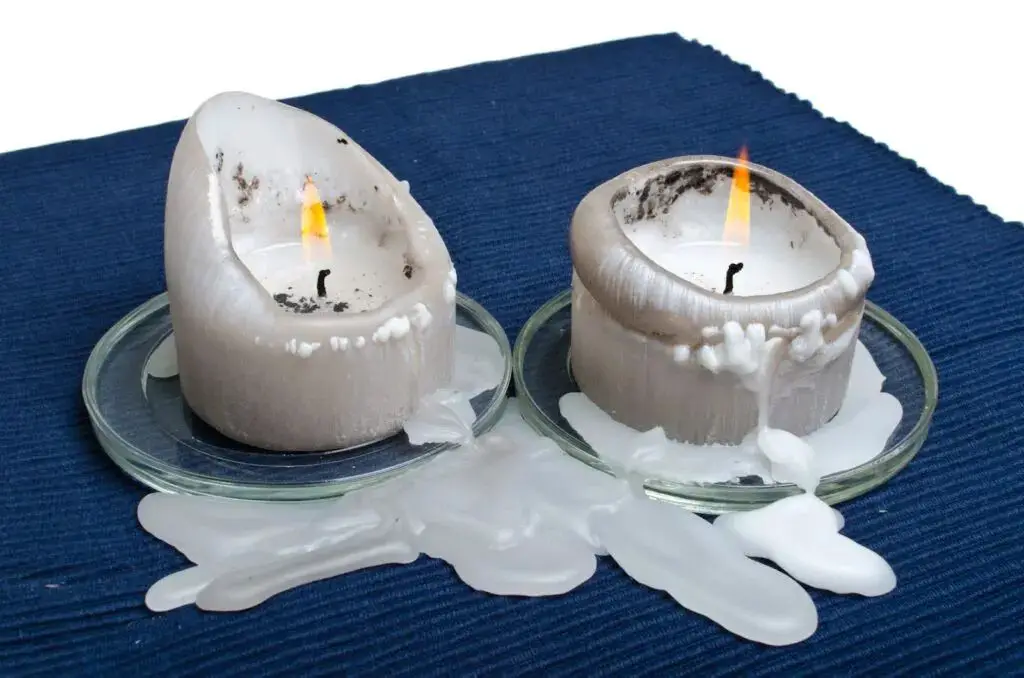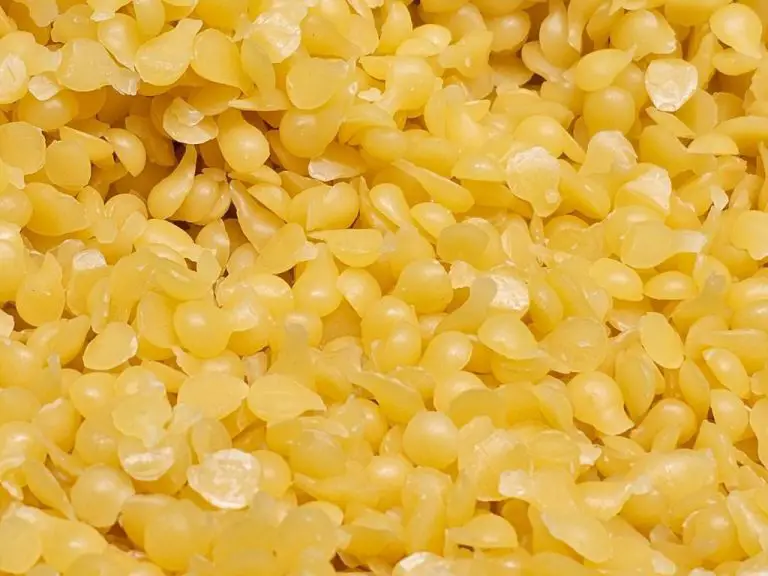Are Scented Wax Melts Toxic?
Scented wax melts, also known as wax tarts, are a popular candle alternative used to fragrance homes. As defined by The Glow Co (https://theglowco.net/blogs/the-glow-co/wax-melts), “Scented wax melts are a flameless fragrance option that’s great for creating the most scent in the least amount of time.” Wax melts are made from soy, paraffin, or a blend of waxes that have been infused with essential oils and fragrance. Unlike candles, wax melts do not require a wick or flame to release their aroma. The wax is warmed in a wax warmer, wax melt burner, or diffuser, allowing the scent to be dispersed into the air.
Popular Brands and Ingredients
Some of the most popular brands of scented wax melts include Yankee Candle, Scentsy, Walmart, Bath & Body Works, and Chesapeake Bay Candle (HappyWax). These brands offer a wide variety of scents and ingredient formulations.
Common ingredients in scented wax melts include:
- Paraffin wax – This petroleum-based wax is commonly used as the base.
- Fragrances and essential oils – These give the melts their scent. Fragrances are synthetic while essential oils are from plants.
- Dyes and pigments – These give color to the melts.
- Soy wax – A natural alternative to paraffin made from soybeans.
While ingredients vary by brand, paraffin wax, fragrance oils, and dyes are found in most standard commercial scented wax melts. Some brands offer more natural options like soy wax and essential oils.
Potential Health Concerns
While scented wax melts can fill a room with pleasant aromas, some ingredients and compounds released when heated may pose potential health risks. According to sources, three main areas of concern are respiratory issues, allergies, and headaches.

The fumes given off by paraffin wax melts when heated can irritate the nose, throat, and lungs, especially in those with respiratory conditions like asthma. The chemicals released can cause wheezing, coughing, chest tightness, and worsened asthma symptoms (source).
Synthetic fragrances added to wax melts are common allergens and can trigger reactions in those sensitive to chemicals like phthalates and formaldehyde. Symptoms may include sneezing, runny nose, itchy eyes, skin irritation, and difficulty breathing (source).
Finally, the strong scents emitted from melting wax can trigger headaches, migraines, and nausea in some individuals. This is especially true for those sensitive to smells. Limiting exposure by keeping wax melts in well-ventilated areas may help reduce risk of headaches.
Main Toxic Ingredients
Two of the main toxic ingredients commonly found in scented wax melts are phthalates and synthetic fragrances.
Phthalates are chemicals added to wax melts and candles to make the fragrance last longer. Unfortunately, studies have shown that phthalates can be harmful to human health, particularly the reproductive system. Exposure to phthalates has been linked to birth defects, decreased sperm count, and other issues.

Synthetic fragrances are also problematic. These artificial scents are usually made from chemicals rather than natural ingredients. Research has associated synthetic fragrances with allergic reactions, headaches, dizziness and breathing issues. They can irritate the eyes, nose and throat.
Both phthalates and synthetic fragrances get released into the air when wax melts are heated. This makes inhalation the main route of exposure. Those sensitive to chemicals may experience more severe reactions to these ingredients.
Safer Alternatives to Scented Wax Melts
There are some safer, more natural alternatives to using synthetic fragranced wax melts that can help avoid exposure to toxic chemicals.
Essential Oil Melts – Melts made with pure essential oils instead of artificial fragrances are a good option. Essential oils are natural plant extracts that provide fragrance without the harmful chemicals. Look for melts made with 100% essential oils. However, be aware that some essential oils may still cause reactions for people with sensitivities.

Soy Wax – Opt for soy wax-based melts instead of paraffin wax. Soy wax is made from soybeans and is biodegradable and non-toxic. Brands like Yankee Candle offer soy wax melts.
Beeswax – Beeswax is another natural alternative that doesn’t contain toxins. You can find pre-made beeswax melts or make your own at home. Look for 100% pure beeswax.
The key is to read labels closely and look for melts made with plant-based waxes, essential oils, and avoid artificial fragrances. Reputable natural brands like Fontana Candle Co offer safer non-toxic options.
Using Safely
When using scented wax melts, it’s important to take precautions to use them safely. Proper ventilation is key – wax melts produce scent by heating the wax, which releases chemicals into the air. Make sure to keep windows open or run fans to allow fresh air circulation. Don’t use wax melts in small, enclosed spaces with no ventilation. Additionally, avoid leaving your wax melt burner on for extended periods of time. The general recommendation is 2-4 hours at a time. Allow the wax to fully melt and the scent to dissipate before turning it back on again. Leaving wax melts burning for too long can cause the wax to overheat and produce more chemical fumes. Take breaks between uses. Following basic safety measures will allow you to enjoy scented wax melts safely.
Special Concerns
Certain groups may be more susceptible to potential issues with scented wax melts.
Pets
The ingredients in scented wax melts like essential oils and fragrances can be irritating for pets, especially cats and dogs. Inhaling the scents can cause sneezing, coughing, or other respiratory irritation in pets with sensitive noses according to veterinarians [1]. It’s best to use wax melts formulated to be safe for pets, look for ones made with essential oils known to be less irritating, and place them in areas pets don’t access.
Children
Children’s developing respiratory systems may also be more sensitive to strong scents from wax melts. The ingredients have not been proven toxic, but parents should use caution and minimize exposure, keeping melts away from children’s rooms and play areas.
Pregnant Women
Some essential oils used in wax melts like peppermint and wintergreen are not recommended for use by pregnant women as they could potentially affect hormones. It’s best for expecting mothers to avoid wax melts altogether or carefully research the specific oils used.
Making Your Own
If you want to avoid any potentially toxic ingredients, making your own scented wax melts is a great option. There are many simple DIY wax melt recipes using natural ingredients like coconut oil, beeswax, and essential oils. One easy recipe is to combine 1⁄2 cup coconut oil with 2 tablespoons beeswax in a glass bowl over simmering water, stirring occasionally until melted. Then remove from heat and add 20-30 drops of your preferred essential oil blend. Pour the mixture into silicone molds and allow to cool completely before removing. Store in an airtight container. You can also use soy wax instead of coconut oil for an alternative vegan recipe, or experiment with other natural waxes like soybean or carnauba wax (Mountainroseherbs.com). The options are endless when making your own scented wax melts at home!
Proper Disposal

When disposing of used scented wax melts, it’s important to let them fully cool and harden before discarding to prevent messes or accidents. Here are some tips for proper disposal:
Allow the wax melt and wax warmer to cool completely before removing the wax. The wax needs to harden and solidify before attempting to remove it. This prevents spills or the wax breaking into pieces if you try to remove it while still warm and pliable.
Once cooled and hardened, you can pop out the wax melt in one solid piece. It should release easily from the warmer. If needed, you can use a plastic knife or scraper to gently pry it off the warmer dish.
Discard the solid wax melt in the garbage can. Do not pour hot or liquid wax down the drain as it can clog pipes when it re-hardens.
For electric wax warmers, be sure to unplug the unit and allow residual heat in the dish to fully dissipate before disposal.
When disposing of many used wax melts, you may want to put them in a sealed bag or container to contain any remaining fragrance.
With proper cooling and hardening beforehand, used solid wax melts can be disposed of safely in normal household trash. Just be sure wax has fully solidified first to avoid any leaks or messes.
Conclusion
In summary, while scented wax melts contain some potentially concerning chemicals like phthalates and synthetic fragrances, the risk seems low when used occasionally and with proper ventilation. Those sensitive to scents or with asthma/allergies may want to avoid entirely. Safer options include 100% soy wax melts with essential oils. When using scented wax melts, never leave melting unattended, keep out of reach of children and pets, use sparingly, open windows, and dispose properly. With some precautions, scented wax melts can be an enjoyable way to add fragrance to the home in moderation. But those concerned about ingredients may want to opt for natural alternatives or avoid entirely. Scented wax melts should not be a primary source of fragrance or air freshening due to potential toxicity with overuse or misuse.





